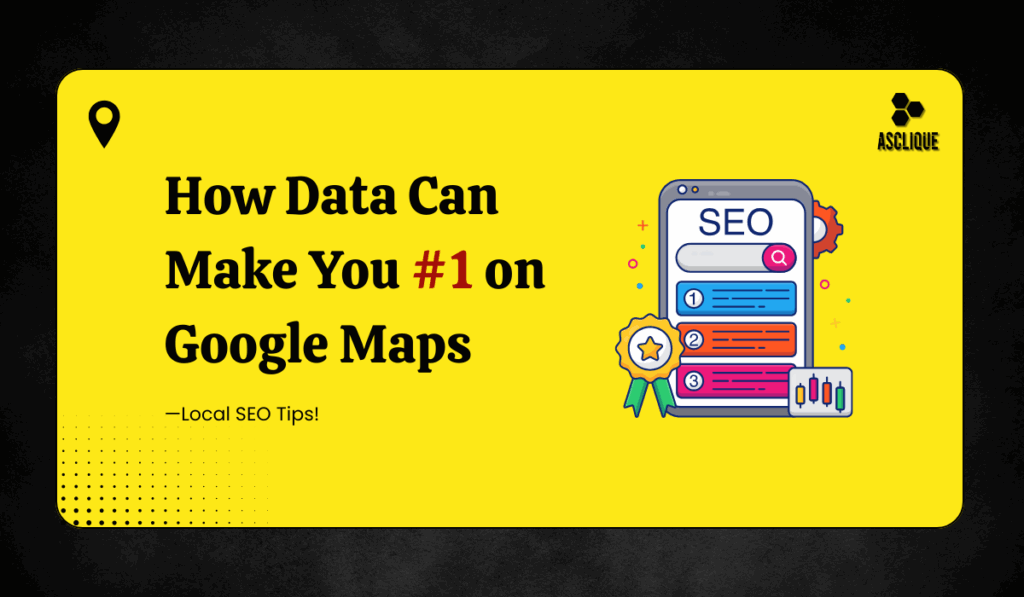If your company relies on local clients, appearing on Google Maps could mean the difference between a ringing phone and an open door. But appearing at the top is not all about completing your business information—it’s all about data-driven decision-making. In this guide, we will explain how improving local SEO based on data could push your business to higher ranks on Google Maps.
What Is Local SEO and Why Google Maps Matters
Local SEO is how companies optimize their online presence to bring more local customers to them through search engines. If someone nearby is looking for a product or service that you provide, you want your company to come up in the top three results on Google Maps—referred to as the Local Pack.
Why does this matter?
- 46% of all Google searches have local intent (Source: Google).
- Companies in Local Pack receive 5x as many clicks as those in organic listings below.
- 76% of customers who search for something local visit a related business within a day.
That’s why it’s important to prioritize not only visibility but also data-driven strategies to optimize it.
Why Data Matters in Local SEO
Guesswork doesn’t cut it in 2025. Search algorithms change, user habits shift, and your competition isn’t idle. Data keeps you ahead.
By monitoring the right data, you can:
- Know what’s trending and what’s not.
- Zero in on top-performing keywords.
- Optimize your content, reviews, and listings for increased engagement.
In short, data-driven local SEO improvement eliminates guesswork and produces better decisions.
Key Data Sources That Drive Local SEO Success
There is a lot of data available, but these are the most helpful sources for local SEO:
1. Google Business Profile (GBP) Insights
This indicates how individuals discover your business, what actions they perform (calls, clicks, directions), and the keywords used.
2. Google Search Console
Monitors local keyword impressions, clicks, and which pages receive local traffic.
3. Google Analytics
Displays user activity on your website—time on page, bounce rate, and device type—which enables you to customize local landing pages.
4. Review and Reputation Data
Monitor volume, star ratings, and keywords used in reviews to identify trends and enhance services.
How to Use Data to Improve Your Google Maps Rankings
Here’s a clear, step-by-step way to start improving local SEO based on data:
1. Monitor Local Search Queries
Use Search Console and GBP to track the very search queries that lead users to your profile. Check for location-based keywords such as “near me” or your city name.
2. Optimize Your Google Business Profile
Ensure:
- Your name, address, and phone number are the same across all platforms.
- Your categories align with user intent.
- You regularly post updates, offers, and events.
- You add genuine, high-quality photos.
Businesses with 100+ photos receive 520% more calls than they do when they have none (Source: BrightLocal).
3. Reply to Reviews Strategically
Don’t simply say “thanks.” Include keywords in your responses. For instance:
“Thanks for the nice compliment! We’re glad you liked our vegan cupcakes in Brooklyn.”
4. Examine Engagement Metrics
If customers quickly bounce away from your listing or site, it’s a sign something’s wrong. Examine your listing click-through rate and site content performance.
5. Make Use of Heatmaps and Scroll Maps
Hotjar is one of those tools that assists you in visualizing how your users engage with your local pages—what they read, overlook, or click.
Using Keyword and Competitor Data to Your Advantage
You can find out what your top competitors are doing by checking and it may reveal gaps in your own plan. SEMrush, Ahrefs, or even a simple Google search manually assists you in finding:
- Keywords they rank for
- Their backlink sources
- Content or pages driving traffic
If they’re appearing for “cheap pet groomer in Chicago” and you’re not, you know what to optimize.
Also, don’t even think about targeting high-volume keywords—look for long-tail, intent-laden ones that match local searches. Example:
- Replace “bakery” with “birthday cakes in Austin.”
Local SEO Improvements That Deliver Real Results
Here’s what businesses typically optimize after inspecting their data:
- Consistent NAP information on all listings
- Applying local schema markup to their site
- Targeted content on local landing pages
- Obtaining additional 5-star reviews via review requests
- Responding to all customer comments
These tweaks are centered. But when they all work together, you can push your profile up in Google Maps.
Common Mistakes to Avoid When Using Data for Local SEO
- Not considering data trends: If traffic declines, investigate why.
- Stuffing listings with keywords: Don’t do this, or you’ll get penalized.
- Failure to update business information: Faded hours or incorrect categories damage rankings.
- Prioritizing solely search volume: Relevance and intent are more important.
Conclusion
With competition as fierce and algorithms as intelligent as they’ve ever been, improving local SEO based on data isn’t a choice—it’s a necessity. When you rely on data to inform your local SEO, you’re not posting content online blindly and waiting for the best. You’re finding out, adjusting, and expanding based on facts. What does that leave you with? Better Google Maps rankings, greater visibility, and increased customers in the door.
FAQ’s
How long does it take to see results from local SEO improvements?
You can typically notice results within 3 to 6 months, depending on your competition and how regular you are with updates and optimization.
Do I need special tools to improve local SEO using data?
Free tools like Google Business Profile, Search Console, and Analytics are enough to get started. Paid tools like Moz or Ahrefs can help with deeper analysis if needed.
How important are reviews for Google Maps ranking?
Reviews are very important. Google considers both the quality and quantity of reviews, so aim to get consistent, positive feedback and respond regularly.
Can small businesses compete with big brands on local SEO?
Yes. Local SEO is all about location and relevance, so small businesses have the potential to rank high by maintaining listings accurately, gathering reviews, and leveraging data.

